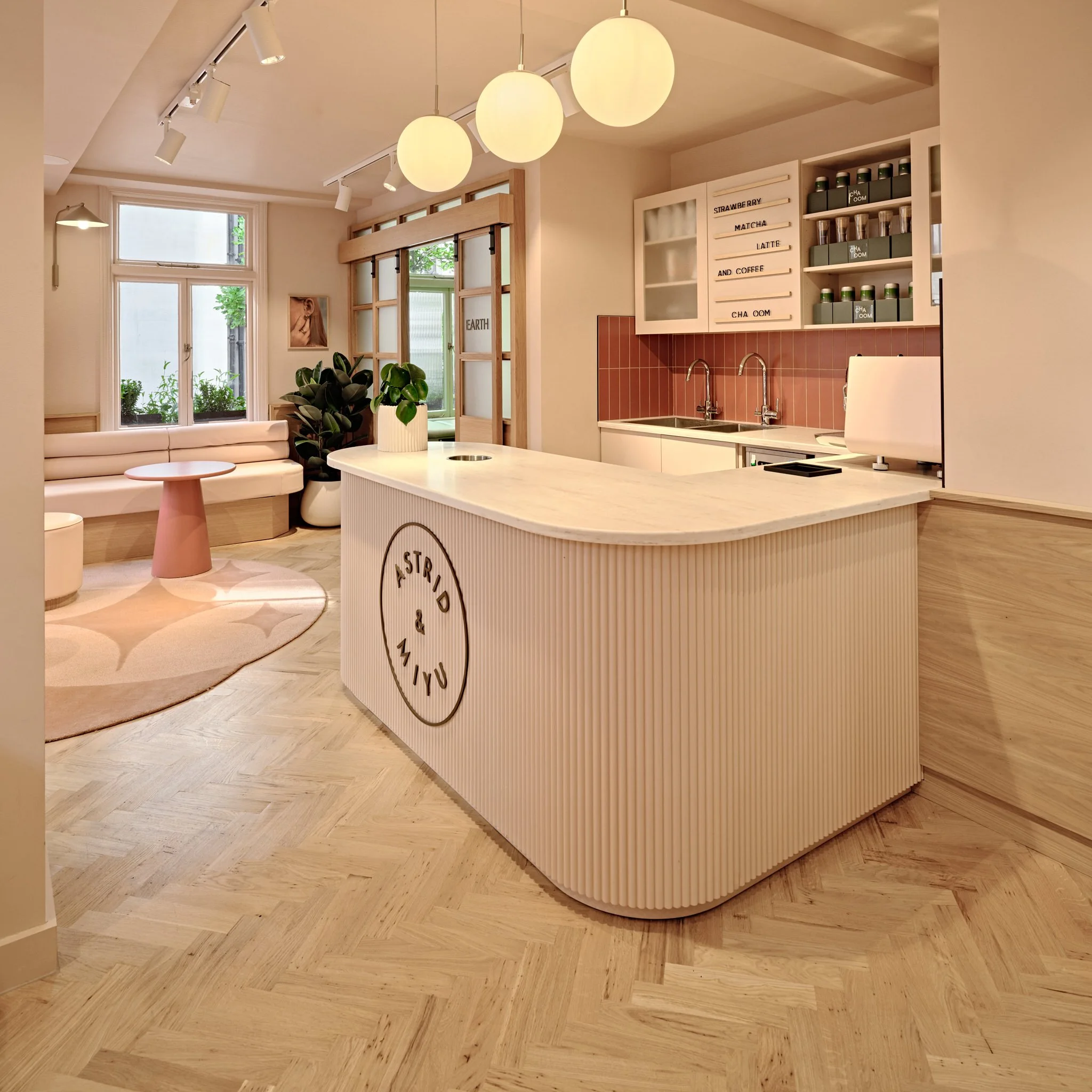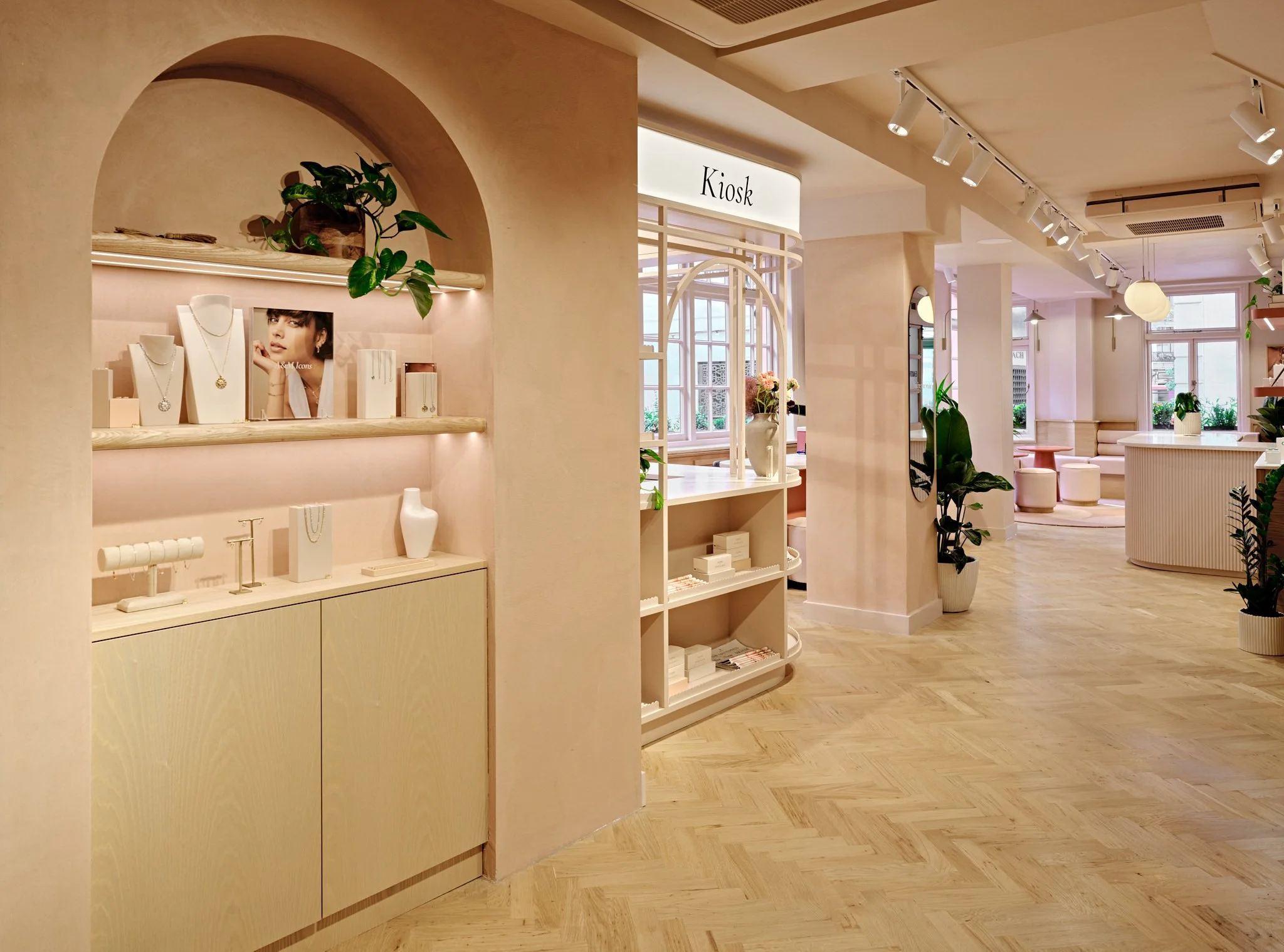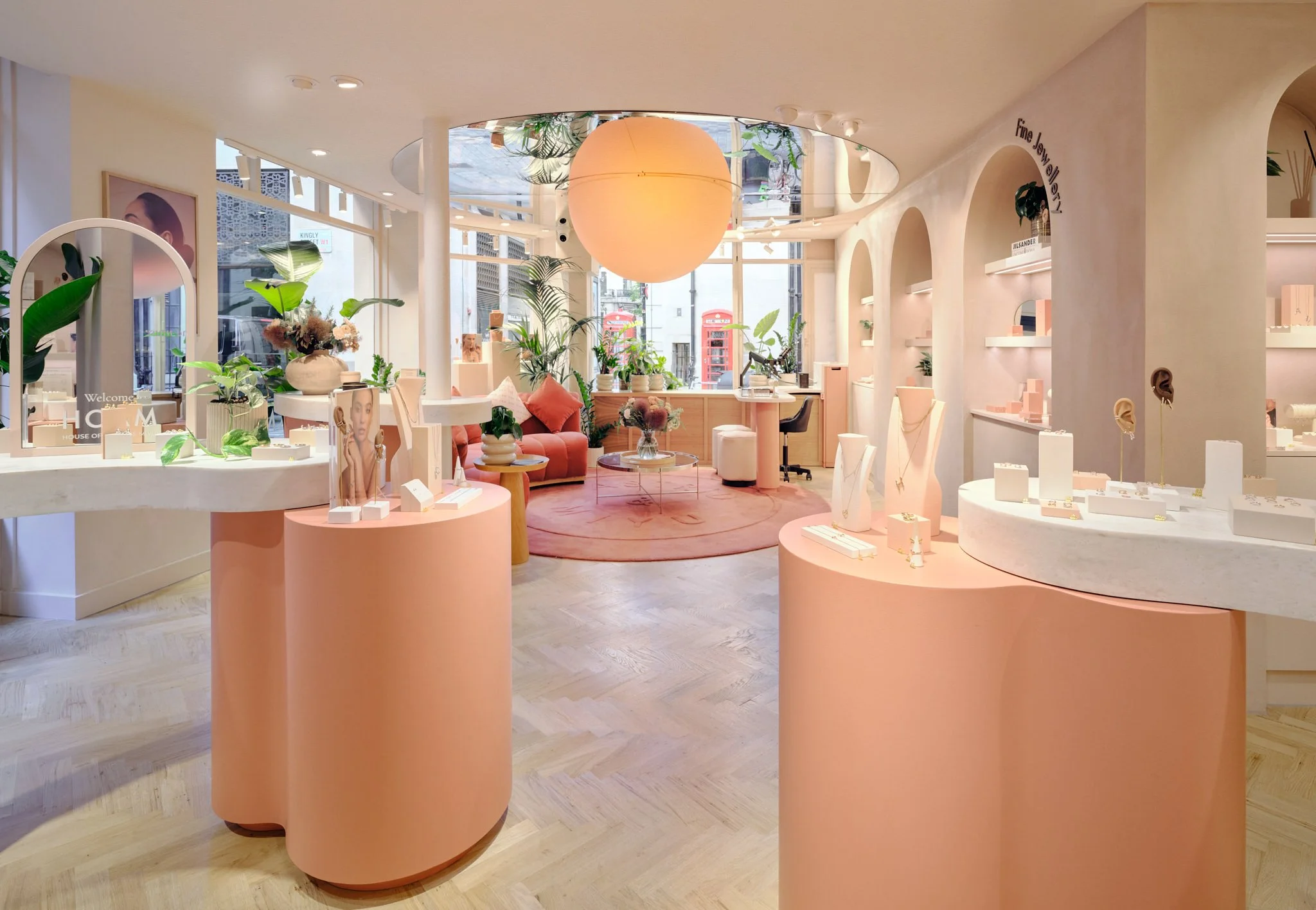Seen Studios on Designing the Future of Retail Through Culture, Connection, and Creativity.
- Shop Drop Daily

- Oct 11
- 6 min read
Blending strategic foresight with human-centred design, Seen Studios has become one of the most progressive voices in the evolution of physical brand experience. With core team members Blair Cooper, Moe Krimat, and Gursharan Panesar at the creative and strategic forefront the agency operates at the intersection of creativity, culture, and commerce. From redefining luxury through immersive storytelling to helping brands build genuine local connections within global frameworks, Seen Studios is rewriting the rules of how retail can feel, function, and connect. In this interview, the team shares their thoughts on purpose-led design, cultural intelligence, and why the future of retail belongs to brands who understand both people and place.

Blair Cooper Creative Director, Moe Krimat Director of Creative & Strategy, Gursharan Panesar Senior Strategist.
SDD: Blair, Seen Studios is known for creating retail spaces that blend creativity with empathy. From your time at Nike to now, how do you approach designing retail environments that truly work for customers while also pushing the boundaries of brand storytelling?
BC: From my time at Nike designing campaign led spatial initiatives across North America to my role as Creative Director at Seen Studios, I’ve always believed that the most powerful retail experiences are the ones that are deeply human. We start by understanding the audience on an emotional level - what excites them and brings them joy? What reassures them to connect with a brand and give their loyalty? What makes them feel seen and a part of something larger? We then translate those insights into spaces and experiences that invite genuine connection. Empathy shapes everything from the thoughtfulness of the spatial navigation, the service style of the team, the lighting to make you feel your best, how we want customers to feel and what we want them to remember, and the small glimmers of surprise that make you smile. Increasingly, that also means thinking beyond the transaction to create ‘third space’ style environments where communities can gather, share ideas, learn something new, and feel a sense of belonging.
At the same time, I see retail as a stage for storytelling - a place where brands can be bold, playful, and thought-provoking in ways that extend far beyond a purchase. Pushing boundaries means experimenting with new materials, unexpected narratives, and immersive technologies that make a brand world feel alive.
The magic happens when those two forces meet: when the story resonates because it’s grounded in empathy, and the space becomes a hub where people return not just to shop, but to connect
That’s where retail transforms from a store into a shared experience worth remembering
Dr. Martens Buzz Van
SDD: Moe, purpose-led retail is becoming more critical than ever. How do you balance aligning creative vision with deep consumer insight and long-term brand goals to ensure that retail spaces are not only innovative but also inclusive and meaningful?
MK: For a business, retail must be a sound long-term investment. For a brand, it’s a chance to connect deeply with existing and new audiences. For locals, it’s about being a welcomed guest with a clear purpose and a responsibility to enhance the spaces you enter. All three need to be considered as stakeholders when designing a retail concept, because in today’s climate, shaped by economic uncertainty, environmental crisis, and social disparity; the purpose of our physical presence has never been more important. As an agency, our creative vision starts by helping teams rediscover their brand’s true purpose and long-term ambitions, reminding them that most were founded to solve a human problem, fulfil an ambition, or address a tension. Too often that mission is forgotten or fails to evolve with changing audience behaviours.
Retail no longer exists just to sell products, nor simply to manifest a brand physically. The challenge is in creating adaptable and non-transactional spaces for communities as a proof of value, beyond being a “nice to have.” In a world where anyone can be a maker and products are everywhere, consumers demand these experiences in order to understand your purpose and why you belong in their space.
Because business, brand, and consumer needs are always shifting, our design innovation must be as agile as our strategy; ensuring creative vision is not only innovative, but inclusive and meaningful to local consumers.
Astrid & Miyu, Carnaby Street
SDD: Gursharan, your work explores how cultural shifts influence retail strategies. Can you share how the concept of ‘glocalisation’, building local community connections within global brand frameworks, has evolved and how it shapes the retail experiences Seen Studios creates?
GP: Glocalisation isn't just about adapting global concepts. It's about understanding that retail is transactional at its core, but that transaction extends far beyond purchase and departure. People want somewhere to belong, show up and engage in dialogue.
While community can feel like a buzzword, using the term correctly is crucial to achieving it. Global brands can't rely on outdated tropes to drive connection. It requires cultural insight driven by asking the right questions, conducting honest research, and rewarding the communities that shape a brand's cultural relevance.
At Seen, driving design forward through strategy means getting this right at the local level. Global brands create global concepts, but bringing them to life locally must embody the nuances of the people who live there. It's our responsibility to deliver not just for our client partners, but for the local audiences who deserve it and expect it. Fundamentally, we're stewards to the spaces we create, and the communities and brands we work with.
This evolution toward deeper cultural intelligence means understanding that designing for true connection comes from respecting local context while maintaining brand integrity. Move correctly or don't move the needle at all.
Levi's Haus of Strauss, London
SDD: Seen Studios has delivered iconic projects like the Jimmy Choo Café and the Dr. Martens Buzzline Van, both deeply rooted in cultural relevance and community. How do you identify and embed those local cultural touchpoints without losing the global brand essence?
SS: For us, cultural relevance starts with recognising that culture is not something you insert into a brand space... it already exists in the world, shaped by the communities who live it. Our role is to understand those existing dynamics and design brand experiences that sit naturally within them.
With Jimmy Choo at Harrods, the local cultural touchpoint was an established, affluent café culture among its audience and shoppers
We didn’t try to impose a new behaviour, we built around an existing one.
The Jimmy Choo concept drew on the brand’s craftsmanship and finely detailed codes, which we translated into a multi-sensory experience; from the precision of the pastry and the refinement of the drinks to the considered design of the cutlery itself. In doing so, the café became a natural extension of an existing ritual, elevated with the brand’s global sophistication while remaining authentic to the way people already socialise, browse, and spend time in that environment.
This approach allows us to honour local culture while preserving the brand essence, crafting spaces where the brand is deeply rooted in its setting yet retains the full clarity and strength of its identity.
Jimmy Choo Cafe, Harrods
SDD: Looking at the future of retail, what do you see as the key drivers of innovation and transformation in physical brand experiences? How are changing consumer expectations, technology, and culture influencing the kinds of spaces and activations you’re developing?
SS: What were once considerations: sustainability, innovation and cultural literacy, are now retail fundamentals. As traditional third spaces continue to diminish, brand owned spaces continue fill part of a larger void, offering destinations and experiences people have missed.
In order to deliver, brands must recognise that consumer behaviour doesn't happen in isolation. It's shaped by larger global forces, cultural shifts, and emerging tensions. The brands that will thrive are those applying strategic foresight to anticipate what their consumers will need next, not only responding to what they want today. This requires brands to anchor themselves in their core as a guide. A strong foundation allows them to interpret these shifting forces and remain adaptable as cultural contexts evolve, rather than chasing every trend without direction.
The brands that resonate understand that spatial design they're constructing worlds that amplify brand lore and deepen connection
This means moving beyond aesthetic appeal to ask: what function does this space or experience serve in people's lives? Technology also plays a role here, not as a novelty, but as a tool to enhance genuine connection and create more intuitive, responsive experiences that feel seamless rather than imposed.
At Seen Studios we recognise that the future of retail lies in balancing these elements: the understanding to respond to present needs, the strategic foresight to anticipate emerging tensions, and the design intelligence to create spaces that serve both. It's about understanding that physical retail experiences represent a crucial opportunity for brands to earn their place in people's lives through genuine value, not only visual appeal.
Converse x TTC x Zalando / Nike x Zalando Air Max Dn8
Blair Cooper is Creative Director at Seen Studios. Connect on LinkedIn
Moe Krimat is Director of Creative and Strategy at Seen Studios. Connect on LinkedIn
Gursharan Panesar is Senior Strategist at Seen Studios. Connect on LinkedIn
Learn more about Seen Studios:
Want to be included in a future feature? shopdropdaily@email.com



































Comments